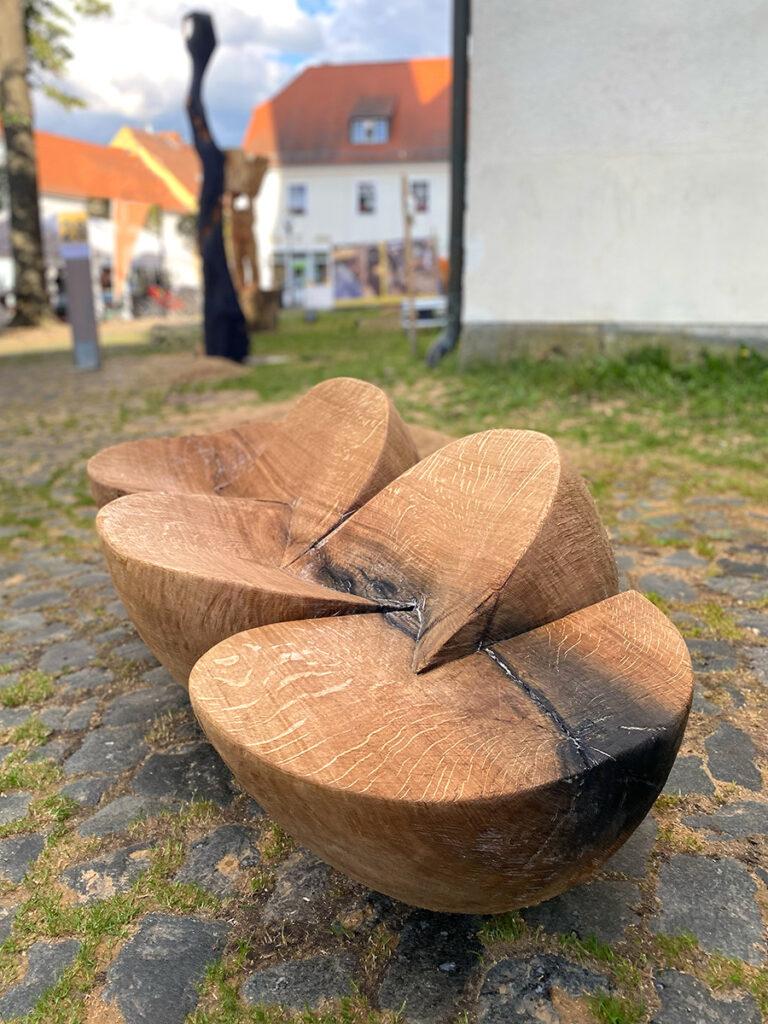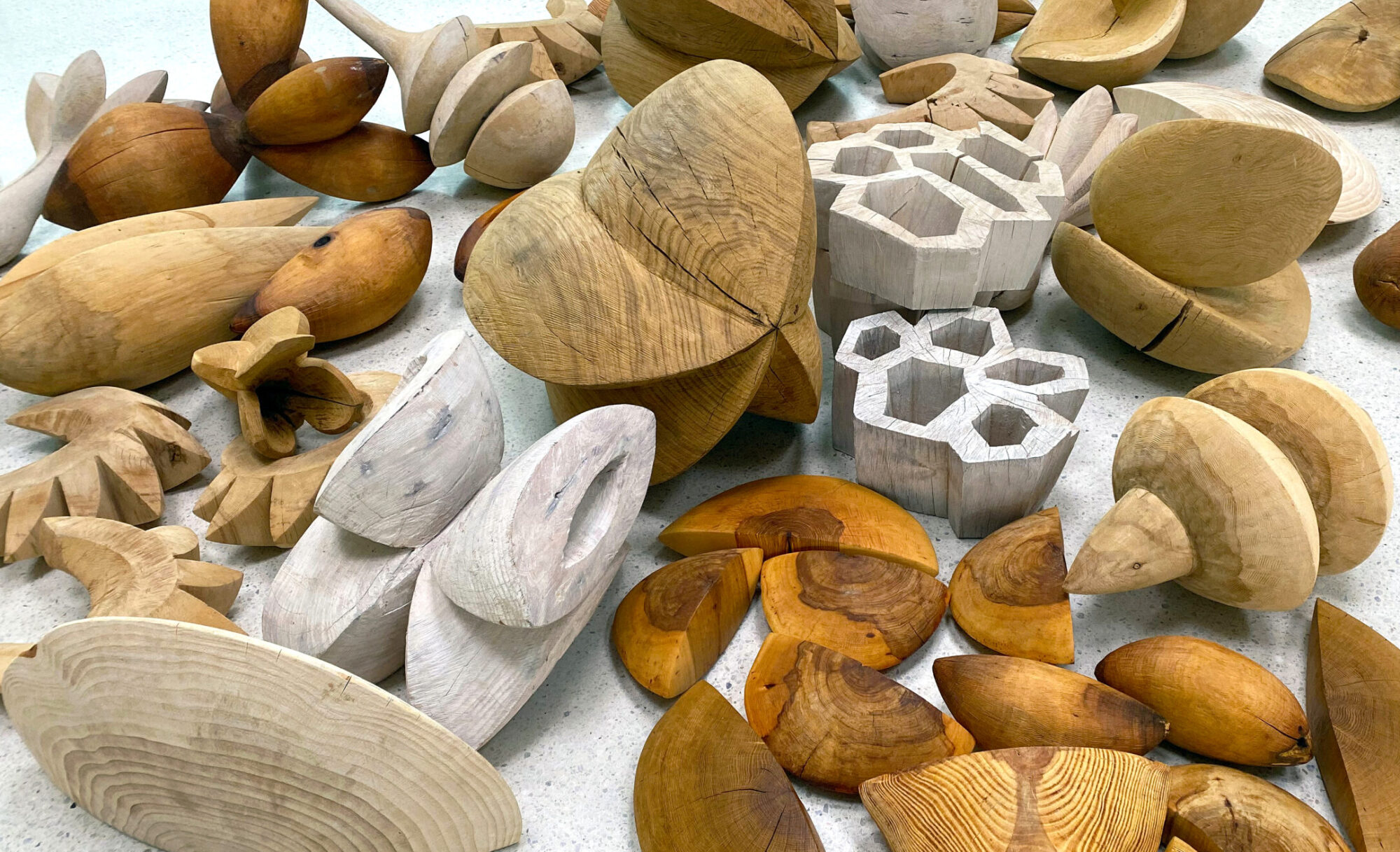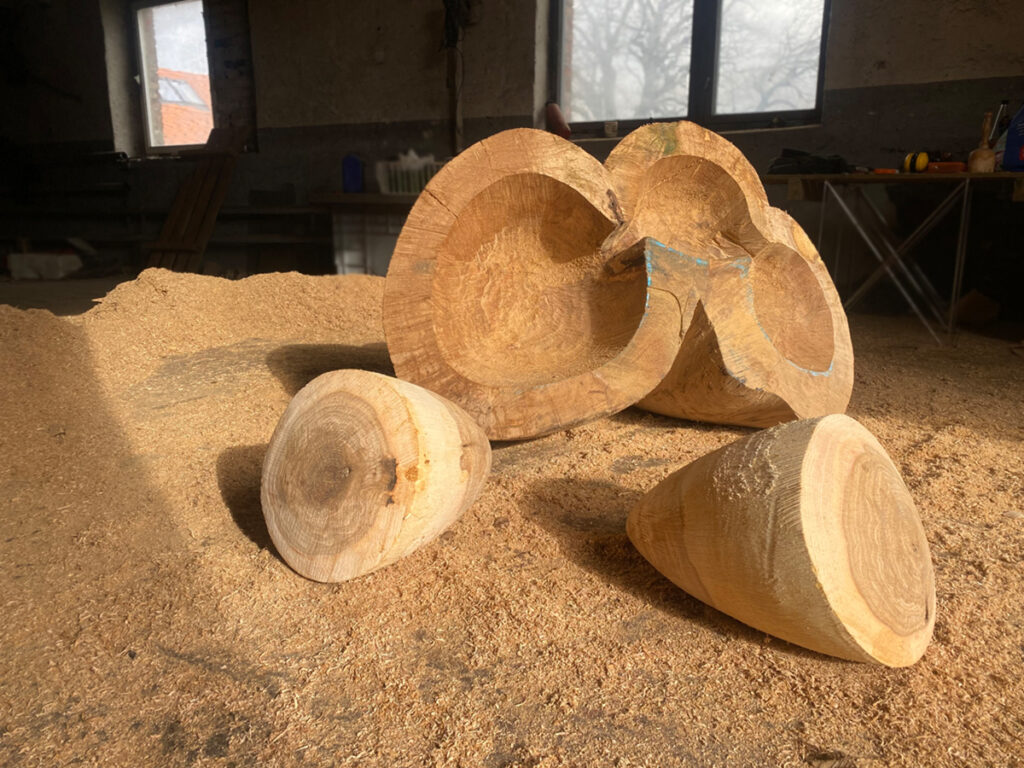
Cryptogamia - marriage in obscurity
2024, oak and ash wood from Schlosspark Trebnitz, 1 x ca. 140 x 80 x 80 cm, 3 x ca. 50 x 42 x 40 cm
About 300 years ago, Georg Friedrich von Ziethen and Johann Gottlieb Gleditsch laid the foundations for a botanical garden in Trebnitz. 3,025 plant species and subspecies were planted there, among them exotic types such as bananas, pineapple and coffee beans. Gleditsch documented the plant population and published it in the Catalogus Plantuarum Trebnizii. This wealth of species made the park known far beyond the borders of Germany’s Mark Brandenburg region at the time. Gleditsch was a doctor, philosopher, botanist, forestry scholar and the director of Berlin’s Botanical Garden. He corresponded with Swedish biologist Carl von Linné. Who knows what seeds and plants they sent each other... When Carl von Linné attempted to classify and organize all living creatures in his Systema Naturae, he chose their names with a subtle sense of humor. According to him, the Cryptogamiae, or “those who marry in obscurity” include algae, moss, lichens, ferns, and fungi.
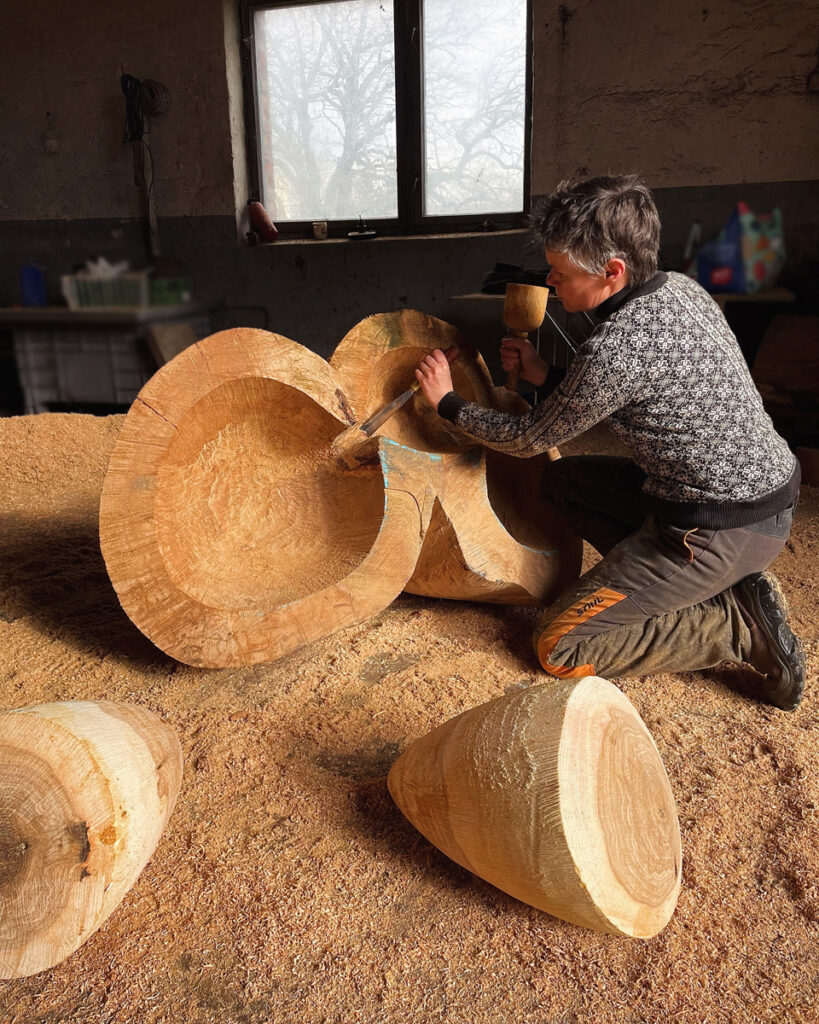
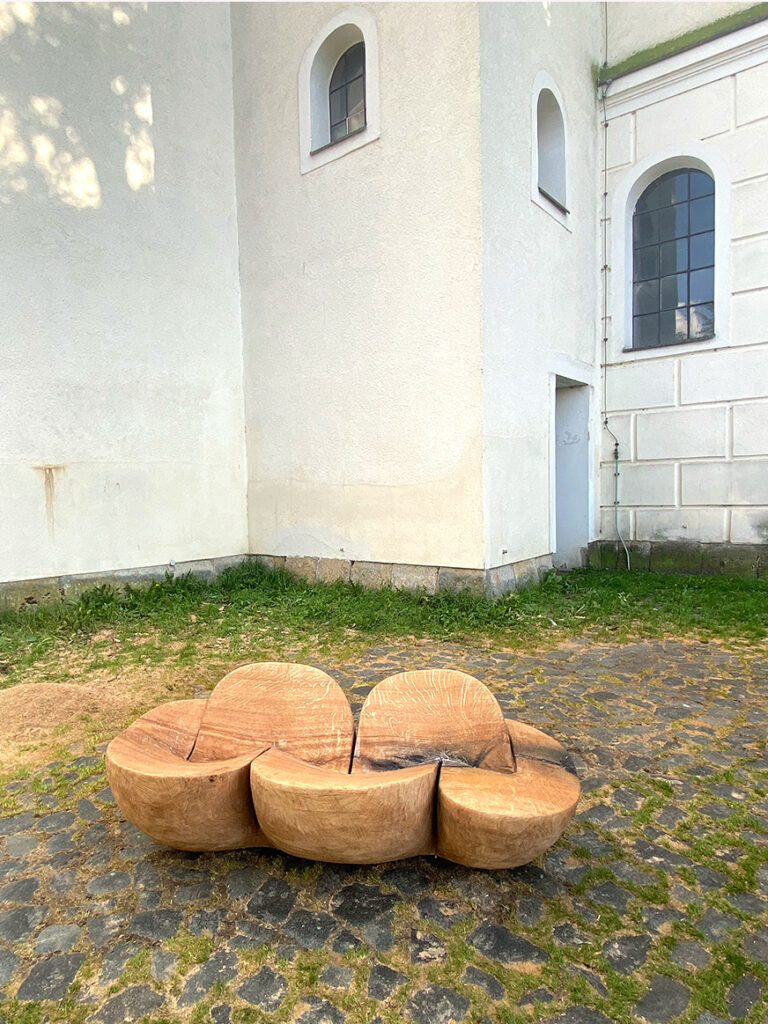
Cryptogamia - marriage in obscurity 2
2025, oak wood, 150 x 70 x 70 cm
